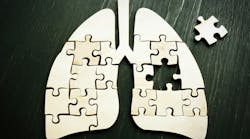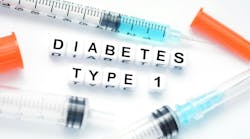Delayed or avoided medical care might increase morbidity and mortality associated with both chronic and acute health conditions, reported the Center for Disease Control and Prevention (CDC).
By June 30, 2020, because of concerns about COVID-19, an estimated 41 percent of U.S. adults had delayed or avoided medical care including urgent or emergency care (12 percent) and routine care (32 percent). Avoidance of urgent or emergency care was more prevalent among unpaid caregivers for adults, persons with underlying medical conditions, Black adults, Hispanic adults, young adults, and persons with disabilities.
As of June 30, 2020, an estimated 41 percent of U.S. adults reported having delayed or avoided medical care during the pandemic because of concerns about COVID-19, including 12 percent who reported having avoided urgent or emergency care. These findings align with recent reports that hospital admissions, overall emergency department (ED) visits, and the number of ED visits for heart attack, stroke, and hyperglycemic crisis have declined since the start of the pandemic, and that excess deaths directly or indirectly related to COVID-19 have increased in 2020 versus prior years.
Nearly one third of adult respondents reported having delayed or avoided routine medical care, which might reflect adherence to community mitigation efforts such as stay-at-home orders, temporary closures of health facilities, or additional factors. However, if routine care avoidance were to be sustained, adults could miss opportunities for management of chronic conditions, receipt of routine vaccinations, or early detection of new conditions, which might worsen outcomes.
Avoidance of both urgent or emergency and routine medical care because of COVID-19 concerns was highly prevalent among unpaid caregivers for adults, respondents with two or more underlying medical conditions, and persons with disabilities. For caregivers who reported caring for adults at increased risk for severe COVID-19, concern about exposure of care recipients might contribute to care avoidance. Persons with underlying medical conditions that increase their risk for severe COVID-19 are more likely to require care to monitor and treat these conditions, potentially contributing to their more frequent report of avoidance.
Moreover, persons at increased risk for severe COVID-19 might have avoided health care facilities because of perceived or actual increased risk of exposure to SARS-CoV-2, particularly at the onset of the pandemic. However, health care facilities are implementing important safety precautions to reduce the risk of SARS-CoV-2 infection among patients and personnel. In contrast, delay or avoidance of care might increase risk for life-threatening medical emergencies. In a recent study, states with large numbers of COVID-19–associated deaths also experienced large proportional increases in deaths from other underlying causes, including diabetes and cardiovascular disease.
For persons with disabilities, accessing medical services might be challenging because of disruptions in essential support services, which can result in adverse health outcomes. Medical services for persons with disabilities might also be disrupted because of reduced availability of accessible transportation, reduced communication in accessible formats, perceptions of SARS-CoV-2 exposure risk, and specialized needs that are difficult to address with routine telehealth delivery during the pandemic response. Increasing accessibility of medical and telehealth services might help prevent delay of needed care.
Increased prevalence of reported urgent or emergency care avoidance among Black adults and Hispanic adults compared with White adults are especially concerning given increased COVID-19-associated mortality among Black adults and Hispanic adults. In the United States, the age-adjusted COVID-19 hospitalization rates are approximately five times higher among Black persons and four times higher among Hispanic persons than are those among White persons. Factors contributing to racial and ethnic disparities in SARS-CoV-2 exposure, illness, and mortality might include long-standing structural inequities that influence life expectancy, including prevalence and underlying medical conditions, health insurance status, and health care access and utilization, as well as work and living circumstances, including use of public transportation and essential worker status. Communities, health care systems, and public health agencies can foster equity by working together to ensure access to information, testing, and care to assure maintenance and management of physical and mental health.
The higher prevalence of medical care delay or avoidance among respondents with health insurance versus those without insurance might reflect differences in medical care-seeking behaviors. Before the pandemic, persons without insurance sought medical care much less frequently than did those with insurance, resulting in fewer opportunities for medical care delay or avoidance.
The findings in this report are subject to at least five limitations. First, self-reported data are subject to recall, response, and social desirability biases. Second, the survey did not assess reasons for COVID-19–associated care avoidance, such as adherence to public health recommendations; closure of health care provider facilities; reduced availability of public transportation; fear of exposure to infection with SARS-CoV-2; or availability, accessibility, and acceptance or recognition of telemedicine as a means of providing care in lieu of in-person services.
Third, the survey did not assess baseline patterns of care-seeking or timing or duration of care avoidance. Fourth, perceptions of whether a condition was life-threatening might vary among respondents. Finally, although quota sampling methods and survey weighting were employed to improve cohort representativeness, this web-based survey might not be fully representative of the U.S. population for income, educational attainment, and access to technology. However, the findings are consistent with reported declines in hospital admissions and ED visits during the pandemic.





